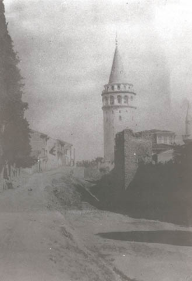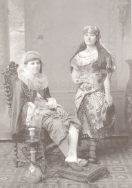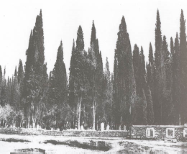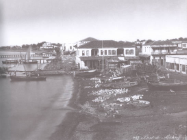|
Engin Özendes (ESFIAP)
www.enginozendes.com
Translated by Özgürcan YAZKURT
It was a nice summer day in 1839. The breeze coming from the Seine was easing the August heat over Paris. François Aragon, the man at the platform in the French Science Academy, rang the small bell, tidied up his jacket by a shoulder move, and 'Gentlemen', he said raising his head. 'By means of light, nature has been slipped on a surface. It is called Daguerreotype as it was invented by Louis Jacques Dauguerre.'. Interjections rose among the crowd reflecting their surprise of how it could be possible to slip the nature, which they had been only used to seeing on paintings and engravings up until then, on a surface by using a device. They immediately left their seats to see the samples, and certainly it was real; what saw was proving so.  
The passion for this invention, which hadn't been renamed as photograph yet, was getting bigger and bigger everyday. Writers, painters, archaeologists, architects and adventurers who travelled to illustrate the mysteries of the East were in the vanguard of the spread of this invention. Following the route of the steamers between France and Middle East the pictures of Egypt, Beirut, Syria and around, and finally İzmir were obtained by Frederich Goupil Fesquet. Some other itinerants reached even farther countries such as India, Japan, China, the USA and Brasil.
What they did was quite a hard work and their devices were very heavy. Daguerreotypes taken by these itinerants were mostly the panoramic views of nature. Each daguerreotype was unique, as it was impossible to copy them. Additionally, as printing and publishing techniques weren't developed it was impossible to illustrate these in books or publications. These daguerreotypes were redrawn by adding mid-shades. As it was difficult to obtain images that contain living and movable objects because of long exposure time, painters included some man and animal figures to their drawings in order to prevent boredom.
In 1847, there was a new technical development. Perfect pictures were obtained on glass negatives sensitised by albumin. Practicality of lighter dark-boxes increased the number of people who are interested in photographing the far countries. It was still taking about 15 to 20 minutes to obtain a scenic image, but at least, it was possible to copy these images thenceforth.
 
With the Pera photograph taken by an Irish, John Shaw Smith, in 1852, for the first time İstanbul appeared in an experimental image. This photo was consisting of two negatives and is known to be the oldest combination.
Photograph brought out a new question together with its invention: 'Does camera reflect its own reality or the reality of the man behind the camera?'. Is photography an art if camera reflects the pure reality and limits the eye behind the optical mechanism? This question causes an important dispute among the artists and art critics. If a scenic image caught by a photograph presents us the reality as it is and as if it makes a copy of nature, how could it be recognised as a work of art? The answer to this question was short and simple: 'If there is a mind dominating the eye behind that optical mechanism and selecting that frame among a wide variety of views, and if this mind presents us the message, it aims to give, by stressing it in a unique composition, this should be called art.
Photographs have caught images that cannot be seen with the naked eye, and provided the disclosure of unknown sides of realities. Muybridge managed to record the glimpse of the movements of a running horse by using a set of cameras. That photograph proved that up until then all the painters had painted horses wrong. In all previous paintings, due to optical illusion, all four legs of running horses had been depicted stretched in the air.
The works of American scinery photographers were almost the forerunners of tourism and environmental awareness. Photographs of William Henry Jackson provided the Yellowstone to be the first National Park in America in March 1872. The first coloured photographs (monochromes) spread at the beginning of the 20th Century brought interesting pastel shades to the scenic images of the itinerants. Later, photographers also tried to draw some attention to the industrial disasters which caused negative effects on environment. While an old car left in the foreground of fields of poppies reaching mountains questioned the contrast between an ugly metal mass and untouched nature, it was also an important stimulant in injecting environmental awareness into people.
Sometimes, by getting away from reality, new trends in photography in the 20th Century lead to symbolist approaches such as searching for erotic images on the trunks of trees created by the reflection of light.
Sedate, serene and sharp-edged scenic views were largely photographed by itinerant naturalists. At the same time, this provided photographers to test themselves in the open air. Scenic photography is not only the act of putting the scenery into a frame, but also an indicator of love of nature.
In the next issue, I will be writing the interesting life story of a photographer. I wish you good days with more photography. Bye for now...
Engin Özendes
|